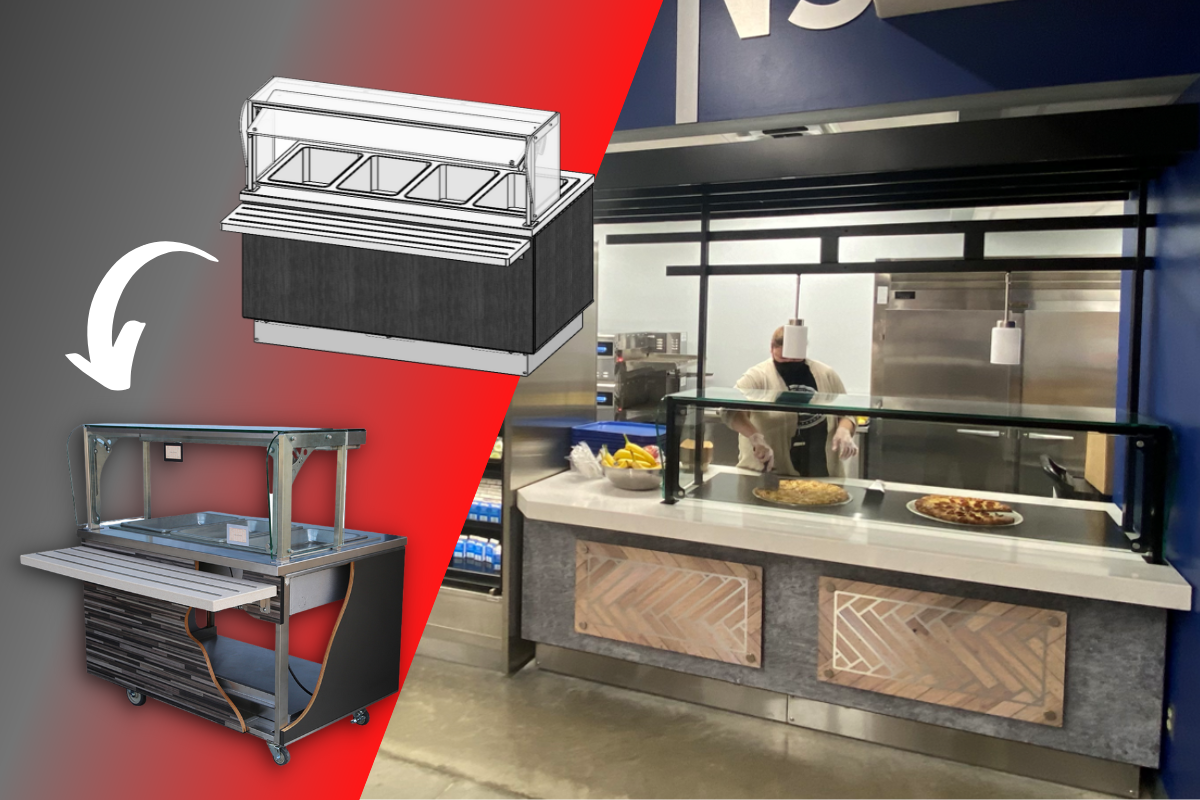Gone are the days of a college dining programs expecting to attract students just because it’s located on campus.
Today’s college students have smarter, savvier culinary preferences, and it’s causing university foodservice operators to change their game to keep them on campus instead of crossing the street for something better. C&U operators understand that many students have the disposable income to dine off-campus. Therefore, they must be competitive with both the variety and quality of their food offerings to keep them on campus.
However, what does “better” mean, and how do demographics drive it?
For starters, it’s all focused on Generation Z, the largest demographic segment in the history of humankind. Based on Bloomberg analysis of United Nations data, Gen Z will comprise roughly one-third of the entire global population this year, edging out Millennials as the largest demographic for the first time.
Depending on which source your reference, a quick scan of the internet shows the following Gen Z character traits:
- Less use of television
- Hyper aware – they know what’s going on all of the time
- More focused on products versus experiences
- Entrepreneurial and competitive
- Motivated by security
- Digital natives, having grown up with connectivity
- Diverse and multicultural
So based on just a cursory review of Gen Z, how do their likes and dislikes, and general characteristics translate to college and university foodservice? How are they changing menus and service delivery? What hot flavor profiles do they crave?
Let’s take a look.
If you’re interested in the trends that will impact your foodservice program the most this year, download our e-report today!
ETHNIC FOODS
If Gen Z is the most diverse and multicultural generation in our nation’s history, it goes without saying our college dining centers should reflect that. Additionally, college and university campuses are often filled with international students and faculty, giving on-campus dining facilities a greater reason to include ethnic and multi-cultural menu options. Flavor trends will certainly change from year to year, but the fact they’re becoming more diverse will not.
PLANT-BASED FOODS
Gen Z is eating healthier for themselves and the world at large. They’re looking for better ways to engage in sustainable practices, and food choices are a large part of those efforts. From salad bars to meatless burgers, college and university foodservice directors enjoy a growing list of products and ingredients that make it easier to provide meat-free meals. Plant-based or vegan menus also assist in keeping food cost at a reasonable level. Animal proteins are typically more expensive than plants and plant-based menus are better for the planet.
SUSTAINABILITY
Yes, we just mentioned sustainability to some degree by mentioning plant-based meals, and yes, we’ve already talked about sustainability on college and university campuses in a previous blog, but we cannot overstate how important sustainable practices are to Generation Z. From fresh and local sourcing, to sustainable seafood and antibiotic-free proteins, this generation cares about clean, sustainable food more than any in history.
A SENSE OF COMMUNITY
Though some say Gen Z is more concerned with a quality product than a quality experience, when it comes to dining, experiences still matter. Eating isn’t just about feeling full or accessing nourishment; it’s about finding a place to unwind, to socialize, and having a sense of community, an important aspect of college life that can often be so difficult to find for those who are new to campus.
“There’s school or work and there’s home, but how do you create this kind of third-place getaway?” asks Costel Coca, a design principal at Anaheim-based Webb Foodservice Design in an article in Foodservice Equipment & Supplies magazine. “That’s what companies like Starbucks have done so effectively, and that’s where much of college and university dining is headed,” he says. “When we start thinking about kitchens and foodservice, we’re now starting with the experience and the story we want to tell in the facility before getting to its functional aspects. It’s about a couple of key factors. One is a desire to create a neighborhood vibe, and that’s being done, in part, via micro restaurants. We’re designing restaurants more than we are food stations, and there’s a heightened focus on the aesthetic value of the facility.”
TECHNOLOGY
Generation Z is one of the digital natives, essentially meaning they were raised with smartphones from the very beginning. They’ve been “connected” their entire lives. With this level of technology usage comes an expectation that technology should make our lives easier, and this mentality extends to foodservice. From mobile ordering to convenient pick-up, the next generations expect technology to play a major role in how they eat. Sustainability is an important college and university foodservice trend. Would you like to learn about more relevant trends? Download our free 2019 Foodservice Trends Guide to see the other trends impacting our industry.
Demographics is just one of many factors that’s already impacting college and university foodservice. Be sure to download your copy of our e-report that lists the top trends you can expect in the 2019-2020 school year.
Lakeside and Multiteria have researched six other trends that will be important to colleges and universities in the 2019-2020 school year. Download your free copy today to stay on top of the latest ideas and innovations that will help you maintain a first-class foodservice operation!





